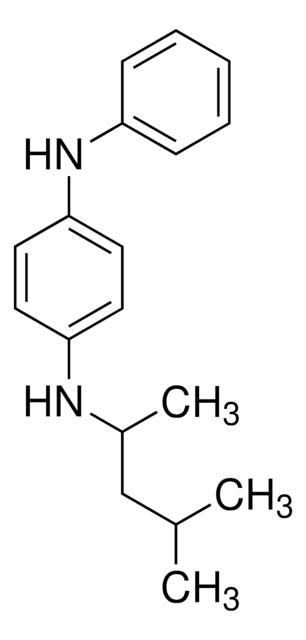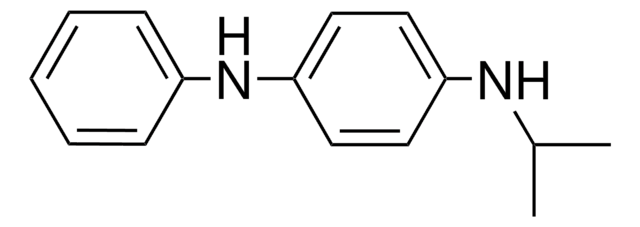292265
N,N′-Diphenyl-p-phenylenediamine
98%
Synonym(s):
N,N′-Diphenyl-1,4-phenylenediamine
About This Item
Recommended Products
Assay
98%
bp
220-225 °C/0.5 mmHg (lit.)
mp
143-145 °C (lit.)
SMILES string
N(c1ccccc1)c2ccc(Nc3ccccc3)cc2
InChI
1S/C18H16N2/c1-3-7-15(8-4-1)19-17-11-13-18(14-12-17)20-16-9-5-2-6-10-16/h1-14,19-20H
InChI key
UTGQNNCQYDRXCH-UHFFFAOYSA-N
Looking for similar products? Visit Product Comparison Guide
Related Categories
Application
- TPA-induced inhibition of gap junctional intercellular communication is not mediated through free radicals.: This research explores the role of N,N′-Diphenyl-p-phenylenediamine (DPPD) in cellular communication, providing insights into its applications in high-performance rubber stabilizers and life science manufacturing chemicals. (Hasler et al., 1990).
Signal Word
Warning
Hazard Statements
Precautionary Statements
Hazard Classifications
Aquatic Chronic 3 - Skin Sens. 1
Storage Class Code
11 - Combustible Solids
WGK
WGK 1
Flash Point(F)
Not applicable
Flash Point(C)
Not applicable
Personal Protective Equipment
Certificates of Analysis (COA)
Search for Certificates of Analysis (COA) by entering the products Lot/Batch Number. Lot and Batch Numbers can be found on a product’s label following the words ‘Lot’ or ‘Batch’.
Already Own This Product?
Find documentation for the products that you have recently purchased in the Document Library.
Customers Also Viewed
Our team of scientists has experience in all areas of research including Life Science, Material Science, Chemical Synthesis, Chromatography, Analytical and many others.
Contact Technical Service











